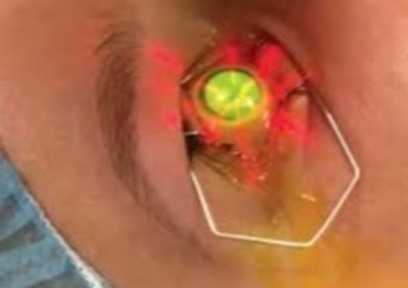Corneal Transplants in the Age of Crosslinking

Creating a New Tool to Evaluate KC-related Quality of Life
July 25, 2024
Why Clinical Trials?
August 22, 2024Originally published in NKCF Update (June 2024).
Researchers at University Hospital in Oslo wondered how the introduction of crosslinking (CXL) impacted corneal transplant surgeries. It has been fifteen years since CXL came to in Norway; CXL is fully established and well-known among eye care professionals. Doctors at University Hospital perform corneal transplants in a region of Norway with more than half of the country’s population. For those reasons, researchers believed they could gather a fairly accurate picture of the state of corneal transplants among the Norwegian keratoconus community.
Reviewing the national corneal transplant registry, the authors found that while the overall number of corneal transplants increased, the number of keratoconus-related transplants decreased. In 2005, 55 of the 137 transplants performed at University Hospital were for keratoconus (40.1% of all penetrating keratoplasty surgeries). By 2021, the number of corneal transplants increased to 352, but only 11 were for treatment of keratoconus (3.1%).
Of the 11 patients who underwent corneal transplants, 10 had stage 4 keratoconus (the most extreme disease presentation) and one patient had stage 3 disease. In 2005, more than 1/3 of the patients who underwent a corneal transplant had stage 1, 2 or 3 disease. The authors speculated that before the availability of CXL, surgeons were more likely to recommend a corneal transplant, even if the keratoconus was mild or moderate. Today, transplant is reserved for those with the most severe disease.
In the U.S., the 2022 Eye Bank Statistical Report offers a snapshot of the work done by the 56-member Eye Bank Association of America (EBAA). KC and other ecstasies have always been one of the top indications for transplant surgery. In 2017, the number of transplant surgeries for keratoconus among EBAA members was 3,166. Five years later, in 2022, that number had fallen to 2,334. It is very likely the number of corneal transplants for KC will continue to decline as the number of patients who receive crosslinking increases.
In 2020, the Eye Bank Association of America reported for the first time that fewer keratoconus patients underwent initial corneal transplants than patients receiving replacement grafts.
In the U.S., as well as Norway, corneal crosslinking and improved contact lens technology have resulted in fewer individuals with keratoconus needing a transplant. This trend should continue, and there will eventually be two groups of individuals with keratoconus: older patients with corneal grafts that will need to be monitored and who may need occasional surgery to replace failed grafts, and those patients who came of age after CXL where transplants are rarely recommended.
References: Hagem AM, Thorsrud A, Soethre M, et al,Dramatic Reduction in Corneal Transplants for Keratoconus 15 years after introduction of corneal crosslinking, Cornea, 43:437-442, 2024.
Mathews P, Benbow A, Corcoran K, et al, 2022 Eye Banking Statistical Report – Executive Summary, 2023



